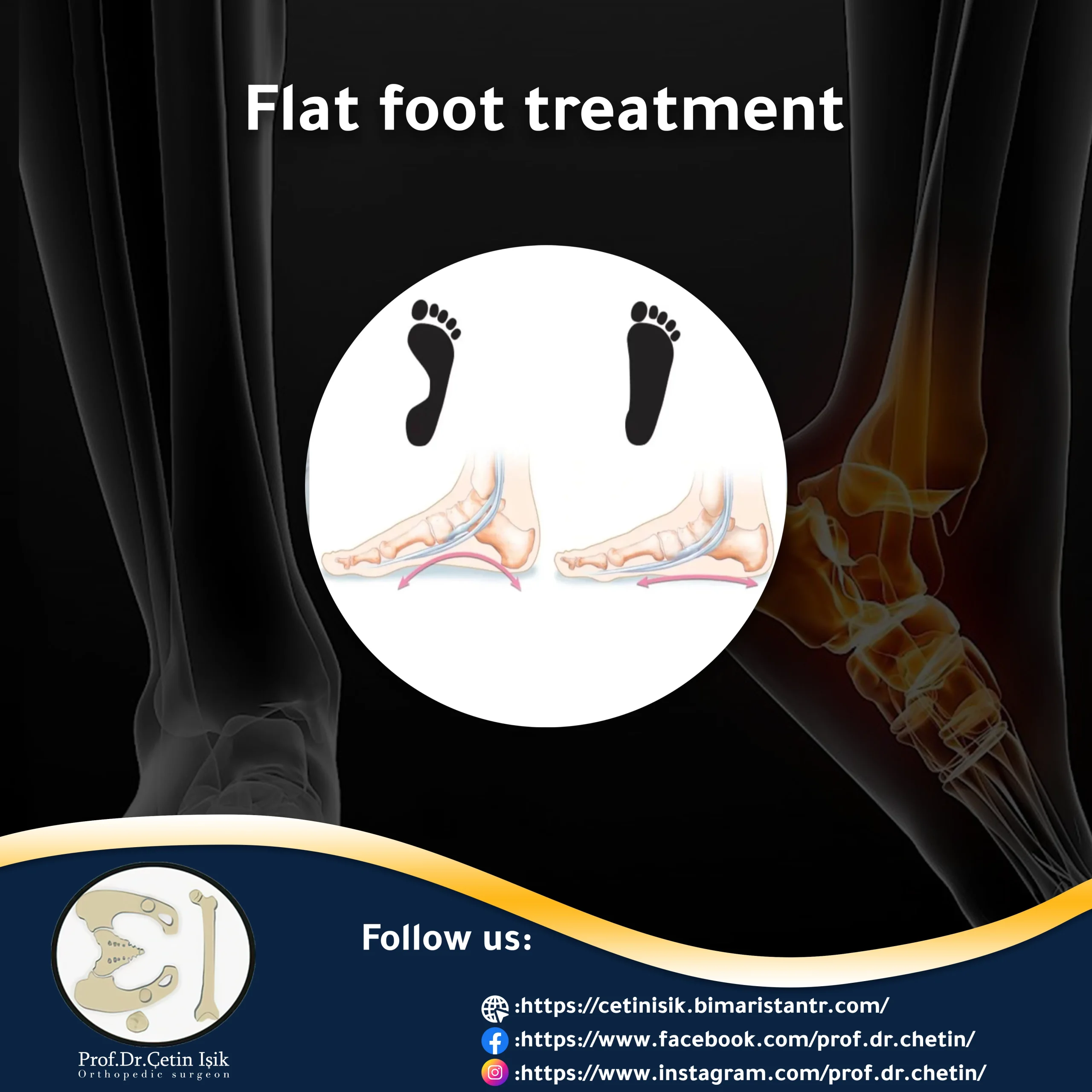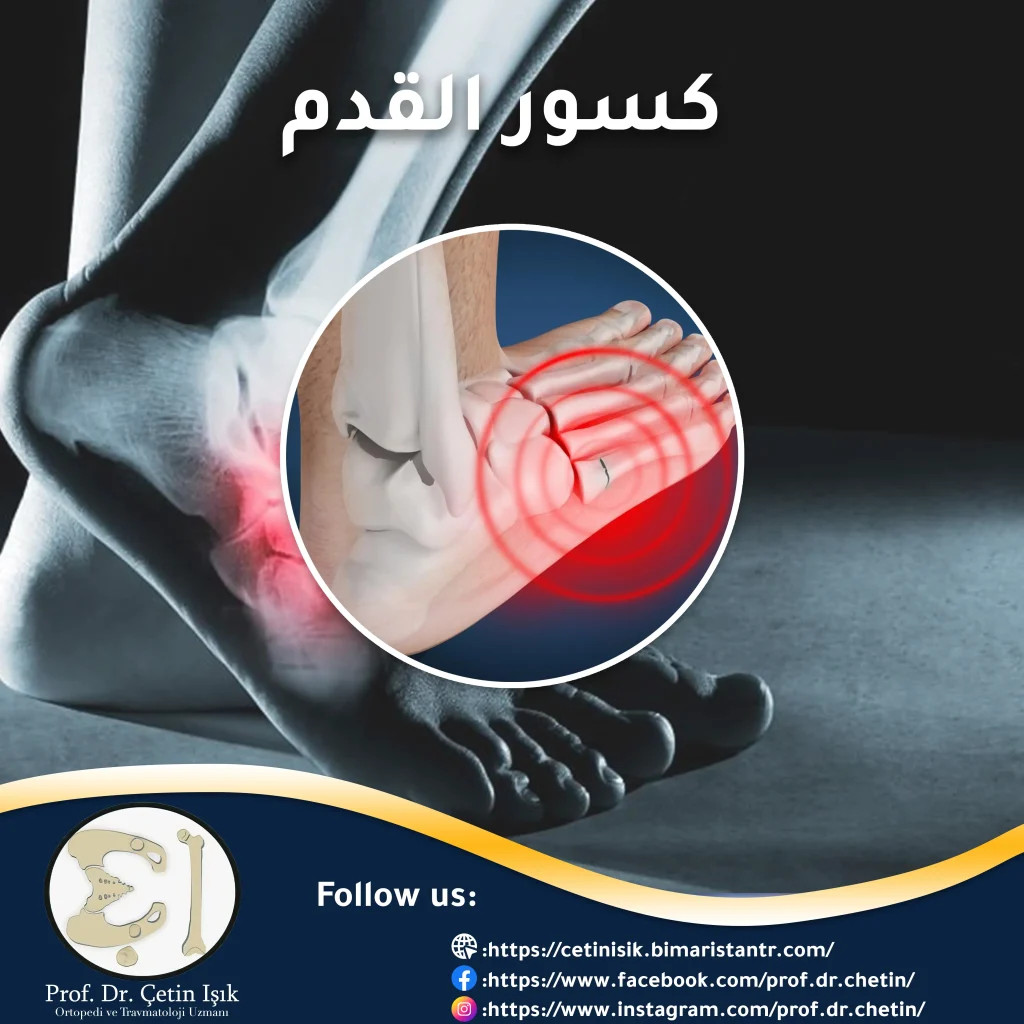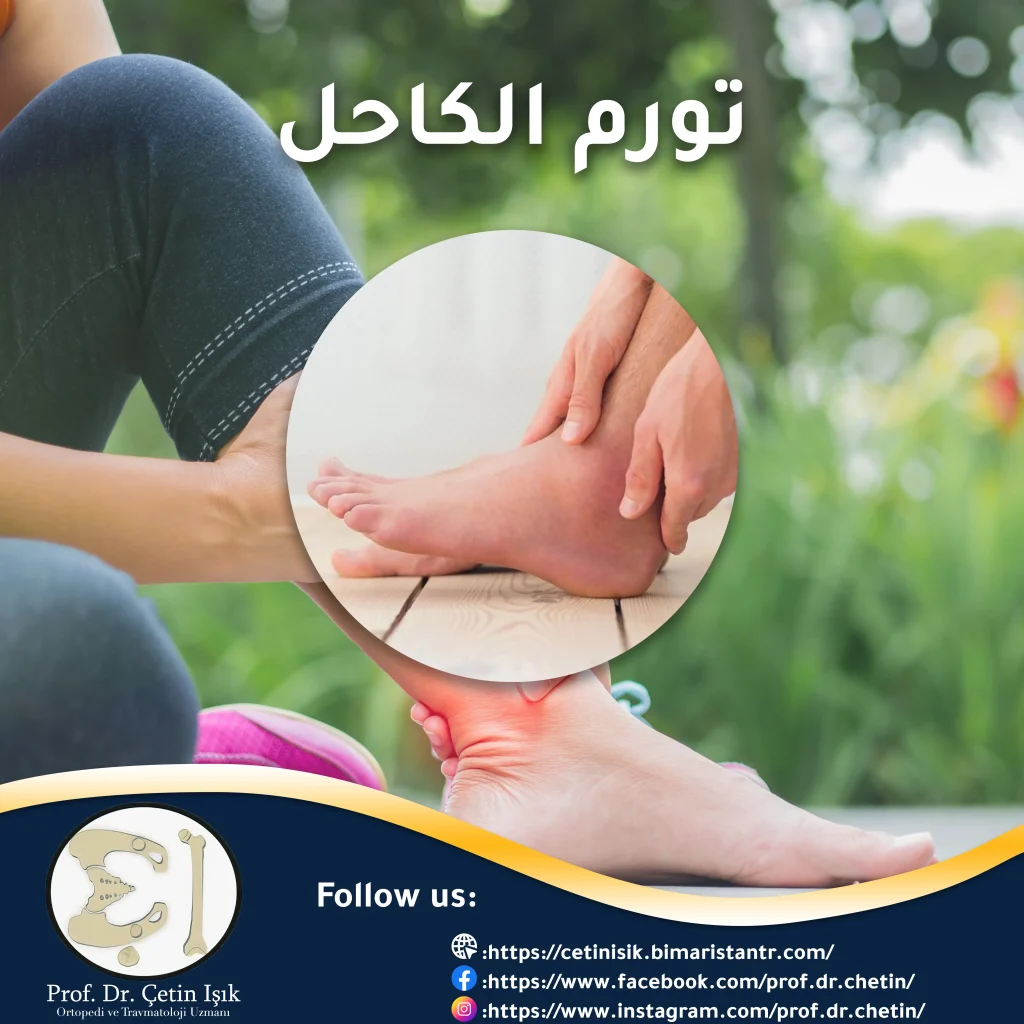Flat feet treatment is limited to the presence of accompanying symptoms, as it is a common condition, which we treat with traditional treatments such as medicines and physiotherapy without surgical intervention except for necessity.
What is flat foot (flatfoot)?
In the normal foot, the arch of the foot consists of three arches: the lateral longitudinal, the anterior transverse, and the medial longitudinal, which is the highest of the arches. It is formed by the metatarsal bones in the front and the ankle bones in the back, and is supported by the surrounding ligaments and tendons.
Arches help distribute body weight to the feet and legs, and their structure determines how a person walks. Arches must be sturdy and flexible to a certain extent to adapt to the stress and friction of a variety of surfaces.
People with pes planus or flat feet have a very low or possibly absent medial longitudinal arch, which is the flattening of the soles of the feet to touch the surface of the ground.
It can happen to one foot or both feet, and this affects a person's alignment when standing and walking, so the possibility of developing pain in the hips, knees and ankles increases.
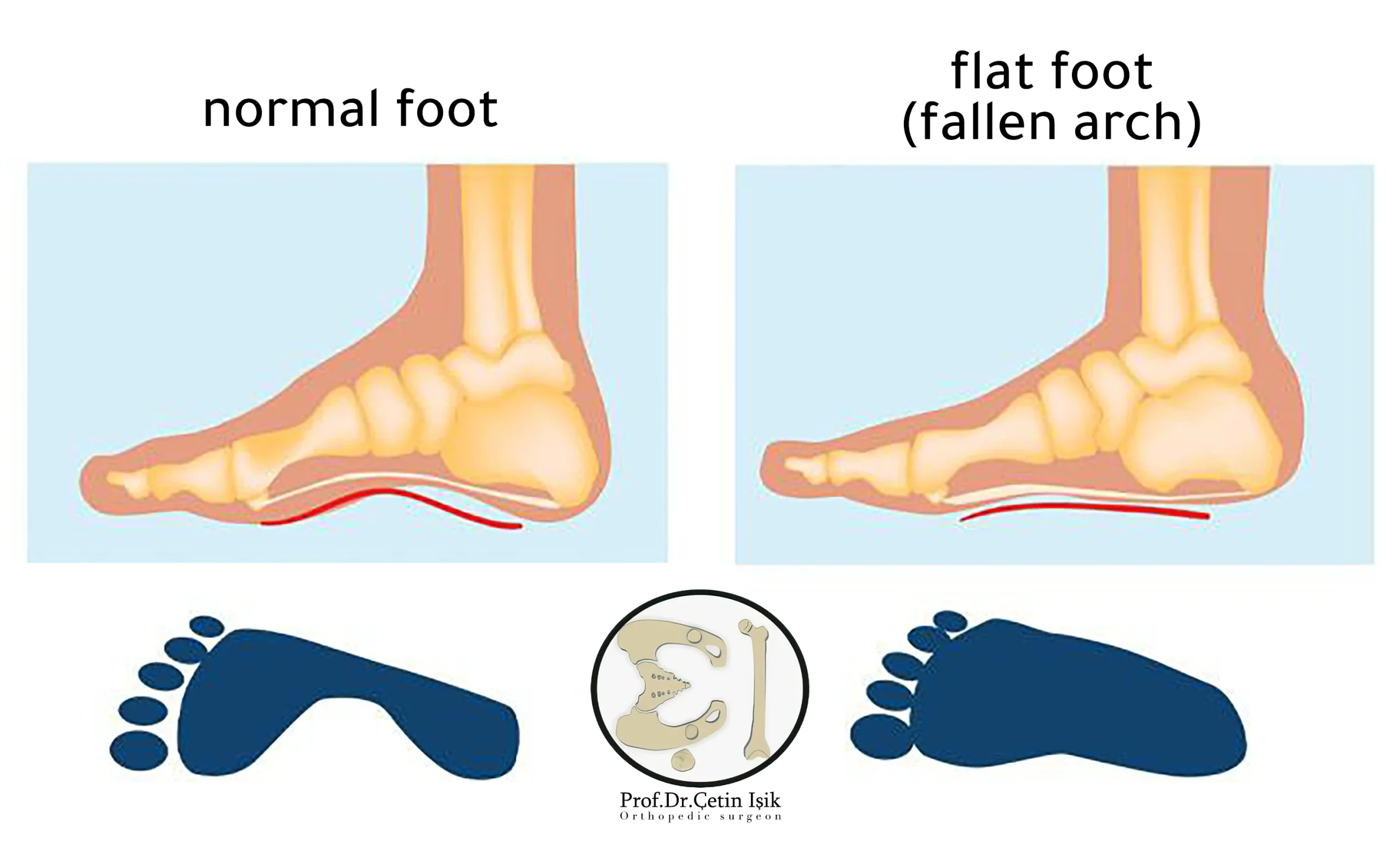
People often develop flat feet in childhood and can develop flatfoot in adulthood.
Flat feet types
Types of flat feet include:
- flexible falt foot: It is the most common condition, as the arch of the foot disappears (flatten the sole of the foot) when standing (putting weight on the feet) and becomes visible when sitting or walking on tiptoes. Flexible flat feet appear during childhood and teenage years, and affect both feet, usually do not cause pain or inflammation.
- rigid flat foot: A person with stiff flat feet does not have arches when standing or sitting (with or without weight). It may occur on one or both feet. It appears in adolescence and worsens with age. The patient feels pain in the feet and difficulty bending and moving from side to side.
- Fallen arch (acquired in adults): It occurs as a result of inflammation or tearing of the tendon in the leg (posterior tibial tendon), and causes the foot to turn outward and can be painful, and may affect only one foot.
- vertical ankle: Also called the lower foot, in this type some children suffer from a bony deformity from birth that prevents the formation of arches in the foot.
Flat feet symptoms
The most common symptom of flat feet is foot pain, which can occur from... Muscle spasm And connected ligaments.
Abnormal pressures on the knee and hip can cause pain in these joints and require treatment.
Pain and sometimes swelling or stiffness affect the following parts of the body:
- foot arch
- Ankle
- the heel
- Knee
- loin
- lower back
Because of the uneven distribution of body weight in the flat foot, this leads to the casualty's shoe wearing out faster than usual and on one limb, which worsens the injury over time.
Most sufferers change their gait and have difficulty running as well.
Causes of flat feet
It is necessary to know the reason to choose the most appropriate method of treating flat feet. Common causes of flat foot formation include:
- Genetic factors, if in the case of flat foot, it is possible to pass from parents to children through genes.
- Foot and ankle injuries.
- Squeeze the arches of the feet from the extra weight.
- Rheumatoid arthritis.
- Damage, dysfunction, or rupture of the posterior tibial tendon.
- Diseases of the nervous system or muscles such as muscular dystrophy and cerebral palsy.
- Tendonitis;
There are some diseases or conditions that increase the risk of developing flat feet:
- Broken bones
- Hypertension
- Pregnancy
- Down's syndrome
- Diabetes
Flat feet diagnosis in Turkey
Usually people with flat feet who do not face a problem do not need a medical consultation, but if the following symptoms appear, it is recommended to seek medical advice. expert advice To treat flat feet:
- Flat feet have only recently developed.
- Pain in the ankles or lower extremities.
- One or both feet are more flat.
- Feeling like the foot is heavy, stiff, or unwieldy.
- difficulty balancing
Diagnosis depends on the physical examination, as the doctor examines the feet from the front and back, and may ask the patient to walk and stand on the tips of the toes to know the type of flat feet and to be able to examine the function of each foot, also looks at the medical history of the patient and listen to the details of the complaint if the flat feet is painful and causes another health problem.
Finally, he recommends radiography, such as:
- X-rays.
- CT scan.
- Magnetic resonance MRI.
- In some cases, electromyography of the leg muscles.

Flatfoot complications
The infection may develop if flat feet are not treated, resulting in some complications, such as:
- Plantar fascitis
- Tumors.
- Stress fracture of the lower extremities.
- Posture related problems.
- Foot arthritis.
- Hammer toes.
- Achilles tendonitis.
- Flesh nails.
- Problems related to the tibial posterior muscle.
flat foot treatment
Flat feet is a relatively common condition that can affect up to 30% in the population, but causes symptoms in 1 in 10 people, and only those who need treatment.
Conservative treatment will not change the shape of the feet, but it helps to solve some problems associated with flat feet
Conservative treatments are usually recommended first, as they include different treatment modalities that can be resorted to:
- Wearing orthopedic shoes designed for the patient's foot provide good support.
- The use of an orthopedic device is beneficial for all ages, as a brace reduces stress, however it is important that it be used under the supervision of a specialist because the wrong use of adults leads to exacerbation of symptoms.
- Take NSAIDs to reduce pain and inflammation.
- Losing weight in case of obesity while adhering to a balanced diet to reach a body mass index in the normal range, in order to reduce the pressure on the feet.
- Exercising: Flatfoot exercises to tighten and strengthen the muscles and tissues in the lower legs, improve flexibility and mobility, relieve uncomfortable symptoms of flat feet within 8 weeks, such as stretching exercises for the tibial tendon and hamstring muscles and exercises under the foot to help stretch the plantar fascia ligament .
- Barefoot walking is recommended for children with flat feet, especially on soft terrain such as sand, as this can help them develop a natural arch.
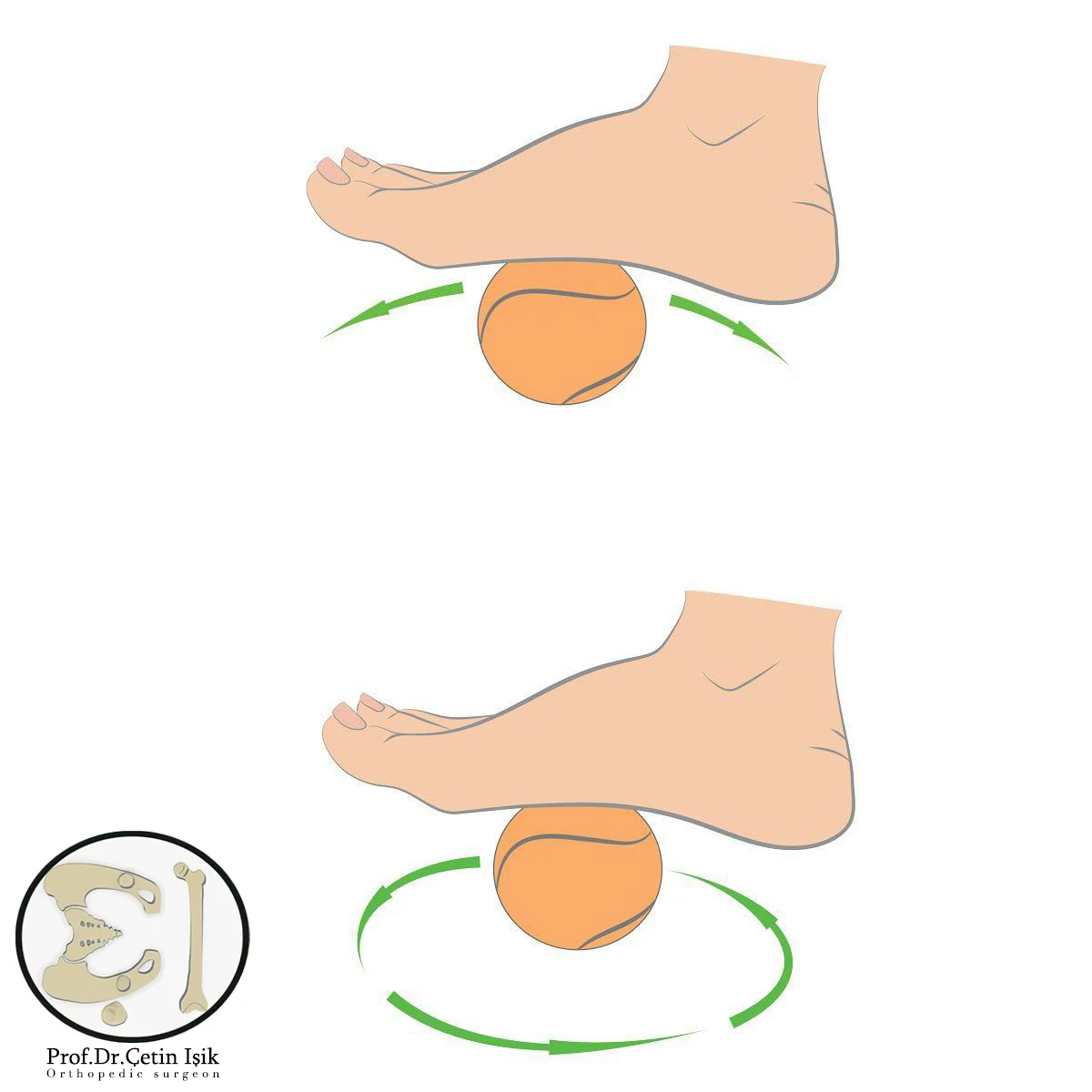
Surgical treatment of flat feet
Some few cases require surgical intervention in order to treat flat feet, if the patient suffers from problems with the bones of his foot, muscles or soft tissues, and in the event of deformities such as bone spurs, then the patient is referred to a specialist surgeon.
During the operation, the doctors:
Arch formation, tendon repair, fusion of bones or joints, or lengthening of the tibial tendon if it is too short.
Complications from surgery, although rare, can include:
- infection.
- Poor ankle movement.
- Incorrect bone healing.
- Constant pain.
In a few cases in children, if the flat misses cause a birth defect, orthopedic surgery may be required to separate the fused bones.
In the event of any medical inquiries about flat feet treatment, you can Contact us to answer it.
Sources:
Common questions
It is not a disability, especially flat feet in children, as the process of development of the arches of the feet in children from infancy until the age of six.
In adults, if it causes a limitation in the range of motion, then flat feet must be treated.
It is one of the most successful surgeries, with a rate of 98% with relatively few complications.
Yes, some people have difficulty walking or even standing for long periods of time due to ankle pain caused by flat feet. These symptoms can be alleviated by taking painkillers or wearing medical shoes designed for the problem of flat feet.


